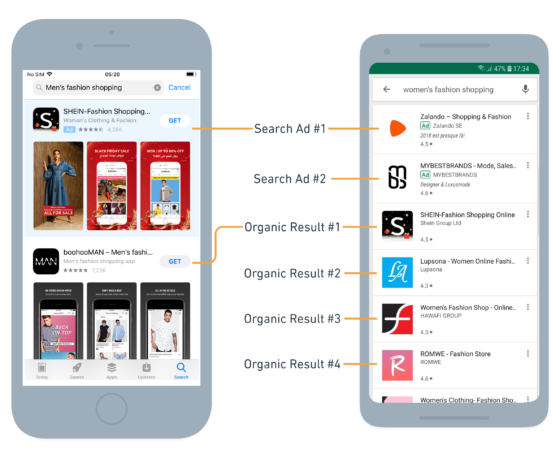What is a Conversion Opportunity?
A conversion opportunity is a chance to convert a person into an app user. In the context of App Store Optimization, conversion opportunities occur when users see app metadata in the stores.
For both the App Store and the Google Play Store, there are three different categories of conversion opportunities: browsing, active search, and the complete product page.
Conversion Opportunity No. 1: Browsing
Users who browse the app store check the app stores’ features, stories, and top charts. These people usually do not have a strong intent to download an app. They have no specific problem they try to solve. Instead, they are simply curious about new apps or about the topics that the editorial teams are pushing.
The conversion opportunity of browsing is a difficult one for app owners. As browsing users have no specific intent, they tend to scan the apps that show up on their screen only superficially. So they do not invest much time in investigating metadata.
Besides, most browsing placements include only a few metadata elements. In most cases, only the app icon and the app title appear.
Opportunity No. 2: Active Search
The second conversion opportunity is an active search. When users enter a keyword into the search bar and scan the SERPs afterward, they have a very specific intent. In other words, they want to find an app that solves their problem.
In SERPs, users see more metadata elements. On Google Play, the app icon, the app title, the average rating, and the publisher name show up. In addition, the gallery with three app preview videos or screenshots appears on iOS SERPs. Both app stores also display the price of the app.
See examples for SERPs on iOS (left) and Android (right) below.

Opportunity No. 3: Full Product Page
The best conversion opportunity for app owners is the product page. Users arrive at the product page after clicking a search result, a top chart ranking, or an external paid ad. This click indicates a basic level of interest in the app. So these users have a bigger intent to download it than browsing users or people scanning a SERP.
The product page contains all available information about an app. But some of them are not viewable. For instance, on iOS, only the first paragraph of the app description is displayed. To read the rest, users have to perform an additional action and click the “read more”-button.
How to Optimize Metadata for all Conversion Opportunities
Creating metadata that works for all conversion opportunities is what App Store Optimization is about. App owners need to design their metadata elements to address users properly on all stages of their decision-making process. For instance, they need to create an app icon that stands out against other apps in top charts and features. Also, they must make sure that screenshots are readable when appearing in SERPs. The same is true for app preview videos that autoplay in search results.